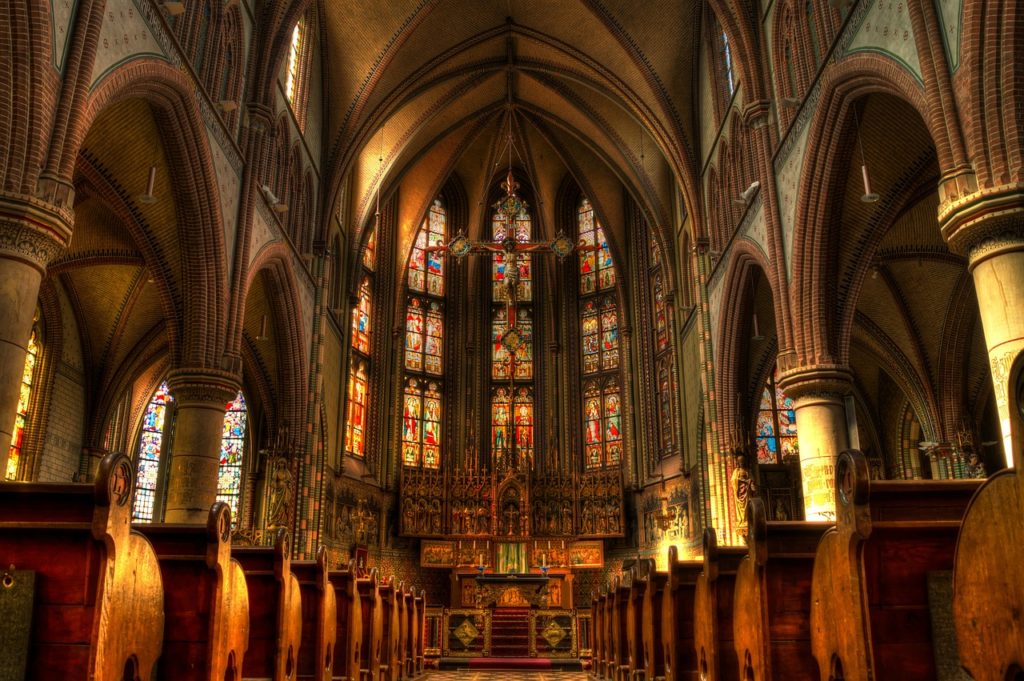
Skitterphoto / Pixabay
When I was a university student, I came across a graphic in a textbook which put the major denominations on a continuum from Roman Catholic/Anglicans on the one end, to the “Evangelical” churches on the other.
I can’t recall the exact wording, but my recollection is that the continuum compared the degree a denomination was open to the mysterious work of the Holy Spirit in and through the physical elements of the sacraments. The mainline churches, like the Christian Reformed Church to which I have belonged since birth, was right in the middle.
Spiritual Mysteries in the Sacraments
At the time, I was puzzled by this. I didn’t understand exactly how my church was at all open to the movement of the Holy Spirit in the physical elements of the sacraments. It was nothing like the Greek Orthodox, Anglican and Roman Catholic worship services I had attended over the years. These services were full of mysterious objects and activities that I didn’t understand and I definitely got the sense that the physical elements of the sacraments were infused with mystery and power.
Then I started to attend an Evangelical church. It has a strong emphasis on biblical teaching and a contemporary style of corporate worship.
I now understand that continuum in the textbook. In the Modern Evangelical churches, the sacraments are strictly human activities.
- Baptism is an external sign of a decision to follow Jesus.
- Communion is a meal of remembrance; participants remember Christ’s death on our behalf.
In the Greek Orthodox, Anglican and Roman Catholic expression of these sacraments, God is active in some very specific ways. In the church of my youth, God was also active, but the explanation as to how, was a little less specific. The sacraments were cosidered a neabs by which we receive Grace.
The Call to Worship
I once went to a Greek Orthodox on a Sunday morning but hadn’t bothered checking when the service began, so I got there about an hour and a half too early. Although the pews were completely empty, there was a lot of activity behind the heavily iconic screen in the middle of the sanctuary.
The priests were chanting and praying and doing things with the Bible and candles and incense and I don’t know what else. What struck me was the lack of an audience. Adorned in their priestly vestments, they were going through all sorts of complex ritual and there was no one there to see it.
Or was there? It’s interesting that as much as we talk about God being the centre of worship in our Protestant churches, our rituals suggest otherwise. In the churches I’m familiar with, the worship starts when the congregants show up and not before.
The Physical Space of Worship
Besides meaningful interactions with God and preparing themselves for their role in the service, I think the Greek Orthodox priests were also engaged in activities that prepared the physical space for worship. It makes some sense that you can’t just have people walk into a place and start worshiping the Almighty, Triune, Creator God.
I was thinking about the space of worship in the church of my youth. Back then it was called a “sanctuary.” I know that the worship space in many churches today is called an “auditorium.”
Labels make a lot of difference. A sanctuary is a sacred or holy place. An auditorium is a place where you hear things. Notice how the first suggests the presence of the holy and the spiritual in the physical space, where the second places an emphasis on human activity; humans making noises and hearing them.
I’m glad my new church doesn’t call the space we gather for corporate worship as “the auditorium.” But what about the sense of holiness for the space in which we worship?
I wonder if we have gone too far in the last 500 years.
